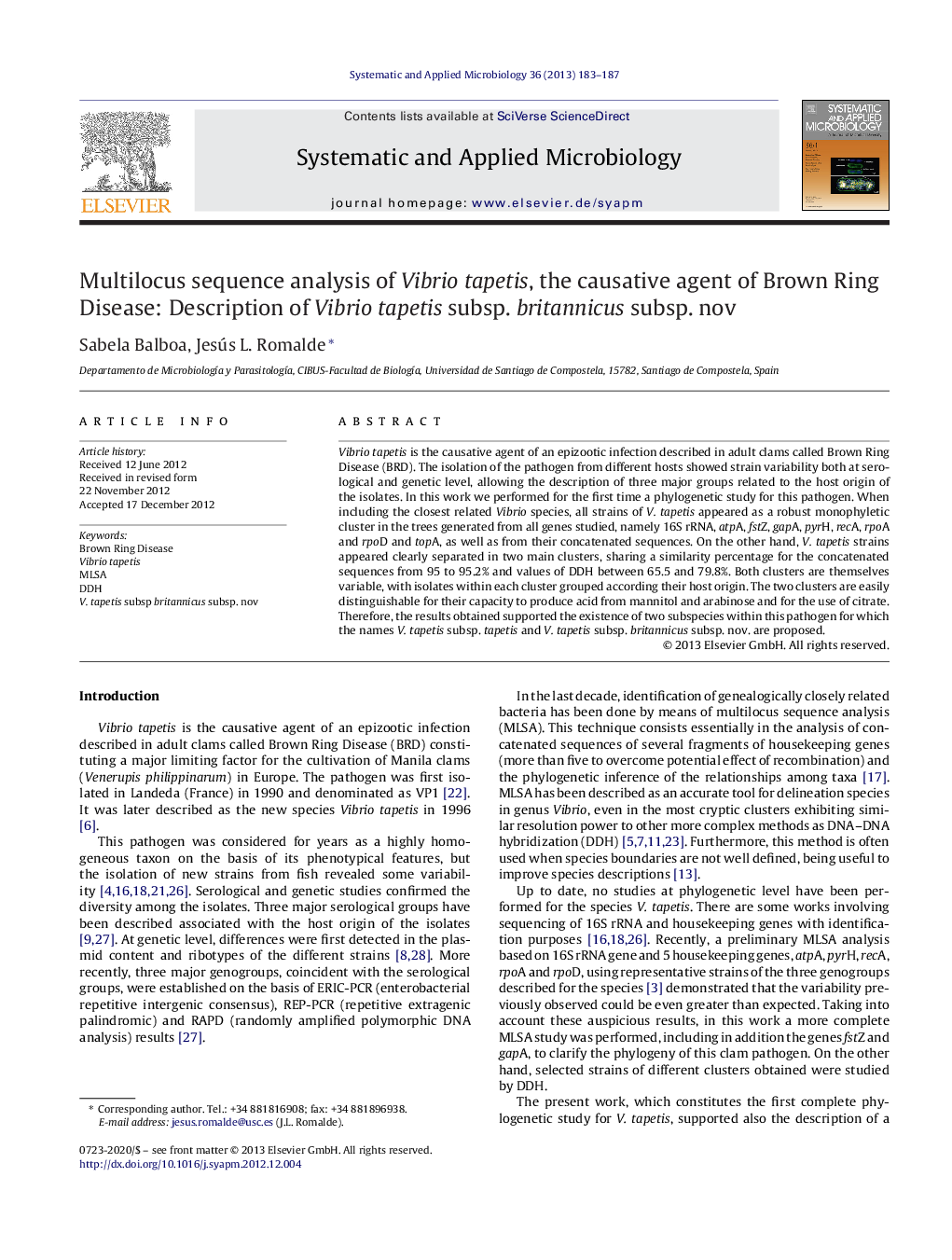| Article ID | Journal | Published Year | Pages | File Type |
|---|---|---|---|---|
| 2063799 | Systematic and Applied Microbiology | 2013 | 5 Pages |
Vibrio tapetis is the causative agent of an epizootic infection described in adult clams called Brown Ring Disease (BRD). The isolation of the pathogen from different hosts showed strain variability both at serological and genetic level, allowing the description of three major groups related to the host origin of the isolates. In this work we performed for the first time a phylogenetic study for this pathogen. When including the closest related Vibrio species, all strains of V. tapetis appeared as a robust monophyletic cluster in the trees generated from all genes studied, namely 16S rRNA, atpA, fstZ, gapA, pyrH, recA, rpoA and rpoD and topA, as well as from their concatenated sequences. On the other hand, V. tapetis strains appeared clearly separated in two main clusters, sharing a similarity percentage for the concatenated sequences from 95 to 95.2% and values of DDH between 65.5 and 79.8%. Both clusters are themselves variable, with isolates within each cluster grouped according their host origin. The two clusters are easily distinguishable for their capacity to produce acid from mannitol and arabinose and for the use of citrate. Therefore, the results obtained supported the existence of two subspecies within this pathogen for which the names V. tapetis subsp. tapetis and V. tapetis subsp. britannicus subsp. nov. are proposed.
